Farm Bureau applauds Congress for full passage of Continuing Resolution
The bill includes short-term spending, disaster aid and a farm bill extension.
Read MoreJosh and Sarah Ison from Clermont County are the editors of the March 11, 2019 Growing our Generation, featuring insights and ideas directly from Ohio’s young farmers and food and agricultural professionals.
If you want to go fast, go alone. If you want to go far, go together.
~ African Proverb
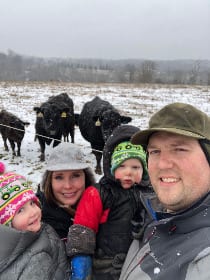 Hello fellow agricultural professionals! We are Josh and Sarah Ison from Moscow in Clermont County and we are embarking on this wonderful life journey with our daughter Thea (3) and son Deklan (1). We are excited to be contributing editors in this 100th edition of Growing Our Generation newsletter. That means 100 young agriculturalists have shared their stories connecting a framework of individuals whom have a passion for agriculture. It’s fitting during this 100th year celebration of the Ohio Farm Bureau Federation which was founded as a grassroots organization to support the state’s farming and food communities.
Hello fellow agricultural professionals! We are Josh and Sarah Ison from Moscow in Clermont County and we are embarking on this wonderful life journey with our daughter Thea (3) and son Deklan (1). We are excited to be contributing editors in this 100th edition of Growing Our Generation newsletter. That means 100 young agriculturalists have shared their stories connecting a framework of individuals whom have a passion for agriculture. It’s fitting during this 100th year celebration of the Ohio Farm Bureau Federation which was founded as a grassroots organization to support the state’s farming and food communities.
Josh works as a senior implementation scientist at BiOWiSH Technologies. Sarah works as an independent food safety & research consultant and part-time adjunct faculty teaching microbiology at Northern Kentucky University. We moved back to Ohio just over two years ago after living in Texas since 2011. Upon graduating from Texas Tech University with PhDs in animal science, we knew that we wanted to raise our kids near family, even if that meant moving across the country without jobs and taking a leap of faith believing in God’s bigger plan. We jumped right into the farming operation and started Cincy Beef, our way to diversify and expand Sarah’s family cow-calf operation by providing natural, high-quality local beef directly to Cincinnati. You can follow our farming stories as agricultural advocates @cincybeef & cincybeef.
As part of his off-the-farm job, Josh gets to travel to different parts of the United States and to countries around the world to provide products and insight into best management practices to improve animal production. Josh works mostly in developing countries to apply probiotics to replace growth promoting antibiotics in animal feeds. Although, we have regulations in the United States limiting antibiotic use in livestock, other countries have yet to implement such stringent, but necessary, policies. Sarah evaluates and develops research protocols to test new and developing technologies. She evaluates US and global food safety needs, import and export requirements and the market impact of improved food safety and on-farm management practices.
Governments in some of these countries are taking a proactive approach to conserve the use of antibiotics and improve water quality. Our work researches the best practices to transition management strategies and utilize new technology such as probiotics and water monitoring.
This is very rewarding for us, but it would be all for naught if we didn’t do our part to be present, give back and grow our generation here at home. As a way to pay it forward, we enjoy engaging with youth through 4-H and FFA as well as producers through the Farm Bureau and county/state cattlemen’s association.
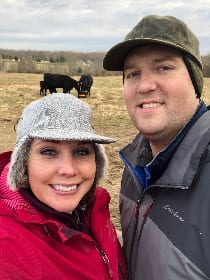 Early in February we attended our second Young Ag Professionals Leadership Experience. The first time we attended in 2017 we were heavily persuaded by one of Sarah’s good friends and college roommates, Rudi Perry; we were skeptical but figured why not. Our first year was pretty good — interesting speakers and workshops but we were just spectators. What happened next with the Ohio Farm Bureau was something we never imagined. In 2018, Sarah was accepted into the AgriPOWER Institute and is about to graduate from Class X. Because of this experience and learning how the Farm Bureau goes to work for farmers and ranchers, we approached the 2019 YAP Leadership Experience from a completely different perspective.
Early in February we attended our second Young Ag Professionals Leadership Experience. The first time we attended in 2017 we were heavily persuaded by one of Sarah’s good friends and college roommates, Rudi Perry; we were skeptical but figured why not. Our first year was pretty good — interesting speakers and workshops but we were just spectators. What happened next with the Ohio Farm Bureau was something we never imagined. In 2018, Sarah was accepted into the AgriPOWER Institute and is about to graduate from Class X. Because of this experience and learning how the Farm Bureau goes to work for farmers and ranchers, we approached the 2019 YAP Leadership Experience from a completely different perspective.
Keynote speakers Vance Crowe and Chad Colby left everyone with thought invoking conversation. How do we engage with the millennial generation and consumers? How can technology help improve production practices? The presentation was complete with a live drone demonstration, which only further supports Josh’s desire to implement drone technology on our own operation.
With 20 workshops and five extended learning demonstrations we took advantage as a husband-wife team to divide and conquer attending as many sessions over the two days as possible. This year we participated in workshops, developed our networks, and engaged in conversations.
With all of the knowledge, trends, and even a Night at the Casino the greatest message we took away from the weekend was building our TRIBE: Finding a network of like-minded individuals who have a passion for agriculture and a desire to get involved and make a difference in their communities. For us it has been enlightening and motivating to meet people who can talk all things agriculture and share in the triumphs and struggles of the farming life.
By becoming engaged you grow deeper and instantly connect with people. We have developed friendships that seem like we have known individuals our entire lives.
We would like to invite you to attend the 2020 YAP Leadership Experience. If it is your first year we would be happy to chat more about our experiences and meet at the conference to avoid that awkward “I don’t know anyone” feeling.
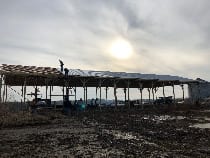 A couple of years ago we started feeding the yearling cattle as our way to “come back to the farm.” We soon came to the realization that our feeding operation would require several infrastructure improvements if we wanted to continue feeding cattle and still be able to pursue our careers off the farm. We were also working with the USDA NRCS to plan out a manure storage facility with several other water quality improvement projects and it was perfect timing to design and build the improvements we desperately needed. Since then, the farm has been a construction zone! Throughout the entire planning process, we have come up with many great ideas and probably even more not so good ideas. We always try to keep an open mind but remain critical of every idea and option we discuss. As our designs evolved, there were several themes that remained constant: safety, efficiency and flexibility, even if the budget was fluid at times.
A couple of years ago we started feeding the yearling cattle as our way to “come back to the farm.” We soon came to the realization that our feeding operation would require several infrastructure improvements if we wanted to continue feeding cattle and still be able to pursue our careers off the farm. We were also working with the USDA NRCS to plan out a manure storage facility with several other water quality improvement projects and it was perfect timing to design and build the improvements we desperately needed. Since then, the farm has been a construction zone! Throughout the entire planning process, we have come up with many great ideas and probably even more not so good ideas. We always try to keep an open mind but remain critical of every idea and option we discuss. As our designs evolved, there were several themes that remained constant: safety, efficiency and flexibility, even if the budget was fluid at times.
We thoroughly enjoy doing stuff as a family- even farm chores- and we wanted to make sure that our kids could help safely. As you can imagine, cattle welfare and safety is a top priority. After all, the cows are in a way helping us finance the whole operation. We could write several pages on efficiency but in this case it really boils down to figuring out how we can best use our resources to accomplish our goals. For us, our time and schedules can be considered scarce resources due to off the farm careers and frequent out of town travel. So as much as we enjoy taking our time while feeding and checking cows/calves together as a family, we knew we had to set up our facilities in a way that just one of us could do the daily routine efficiently and safely.
Seeing how our original idea of what the farm should look like differs from the current state and plans; we knew anything permanent would need to allow for maximum flexibility. Additionally, having flexibility allows us to try new things. A few years back Josh heard Dr. Kenneth Eng give a presentation on the addition of a dry lot cow-calf enterprise as a way to allow young farmers/ranchers to enter the family farm/ranch business and get started on relatively low inputs. We have kept some of these concepts in mind when planning out the long-term vision for our operation. The use of confinement or semi-confinement cow-calf operations is certainly not a new concept to the beef industry, but researchers continually offer new ideas to optimize facility design, alternative feeding strategies and health management.
Josh does consider himself to be very lucky that Sarah is okay with building barns and fences before starting on a new home. Beyond working nights and weekends to make our farm plans a reality, we have made a few other sacrifices such as temporarily living with Sarah’s parents. Don’t get us wrong, in-laws are great but let’s just say that our current situation is certainly improving our productivity and we are all ready to get the projects wrapped up.
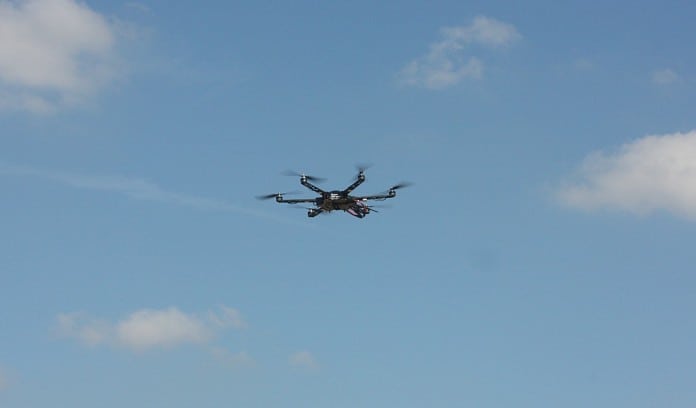 While attending the 2019 YAP Winter Leadership Conference I enjoyed Chad Colby’s General Session talk so much that I later attended his breakout session – Technology In Agriculture. His insight into the use of drones in agriculture and other industries was entertaining and informative. The resources shared really opened my eyes to the opportunities to apply this relatively new technology to improve practices, reduce cost and increase productivity (can you tell I’m writing this to convince Sarah how much we really need a drone?). After further reading and research into the many applications of drones in agriculture, I came across a Drovers article about the AgriLife research program exploring the use of drones with thermal imaging to more accurately identify sick animals and use the data generated to inform treatment protocols for optimum animal husbandry. At this point given the size of our operation, I admit that this new technology might seem like more of a want than a necessity. However, it will be interesting to see how this technology is embraced and utilized in our industry in the future.
While attending the 2019 YAP Winter Leadership Conference I enjoyed Chad Colby’s General Session talk so much that I later attended his breakout session – Technology In Agriculture. His insight into the use of drones in agriculture and other industries was entertaining and informative. The resources shared really opened my eyes to the opportunities to apply this relatively new technology to improve practices, reduce cost and increase productivity (can you tell I’m writing this to convince Sarah how much we really need a drone?). After further reading and research into the many applications of drones in agriculture, I came across a Drovers article about the AgriLife research program exploring the use of drones with thermal imaging to more accurately identify sick animals and use the data generated to inform treatment protocols for optimum animal husbandry. At this point given the size of our operation, I admit that this new technology might seem like more of a want than a necessity. However, it will be interesting to see how this technology is embraced and utilized in our industry in the future.
SUBSCRIBE to receive Growing our Generation, a biweekly eletter with a different featured editor to meet each issue. Browse the archive of past issues.
This e-newsletter is brought to you by Ohio Farm Bureau’s Young Ag Professionals. Learn more about Farm Bureau membership, including a discounted category for those 18-24 years old.


The bill includes short-term spending, disaster aid and a farm bill extension.
Read More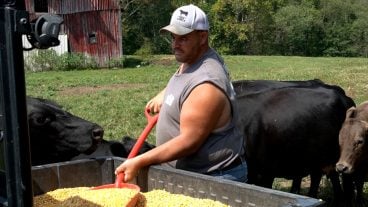
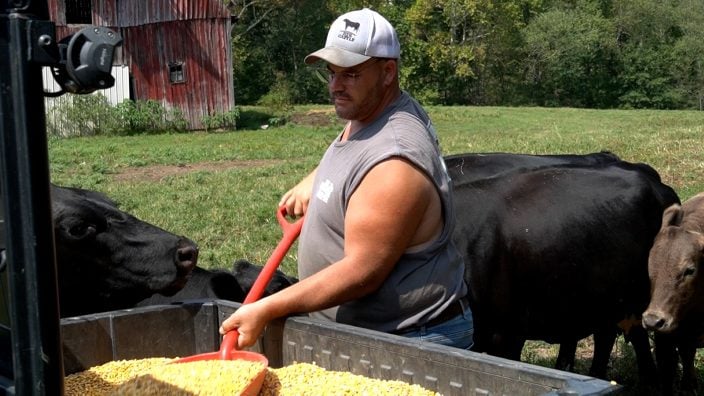
The disaster relief funding disbursement will be overseen by the Ohio Department of Agriculture and administered through local soil & water districts.
Read More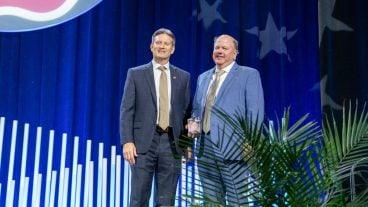
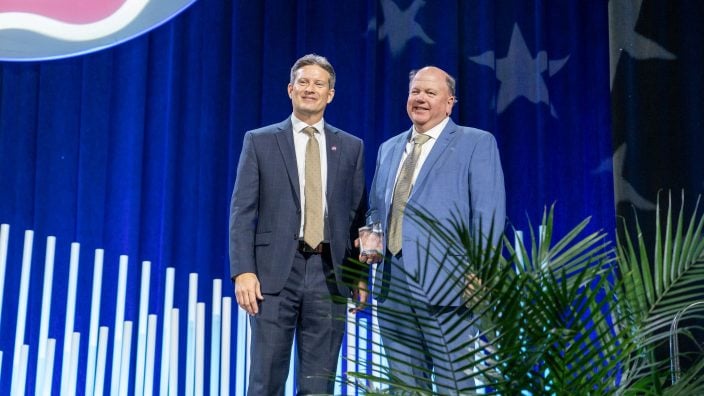
The winners of the 2024 Ohio Farm Bureau Advocacy in Action Award are Roger Baker of Wayne County and Neall Weber (posthumously) of Franklin County.
Read More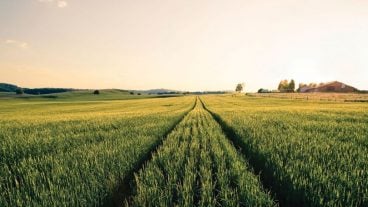

The requirement for businesses that are registered with their state to file information about beneficial owners with the Financial Crimes Enforcement Network is in flux.
Read More

Ohio’s Electric Cooperatives recommend safe energy conservation during extreme cold snaps to help alleviate demand.
Read More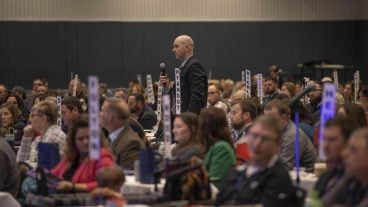
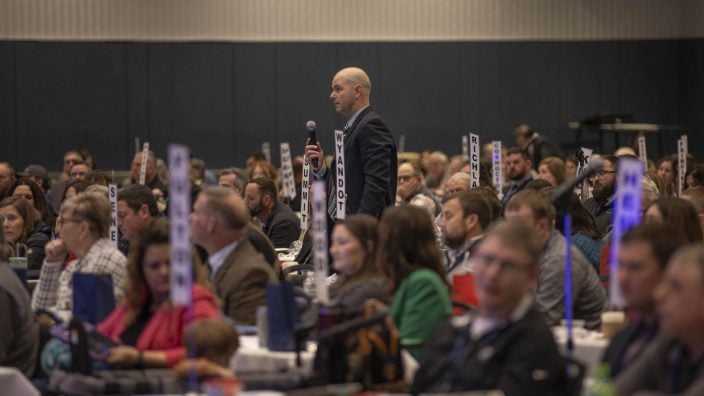
Delegates discussed many important topics including carbon sequestration and mental health at the Ohio Farm Bureau’s 106th Annual Meeting.
Read More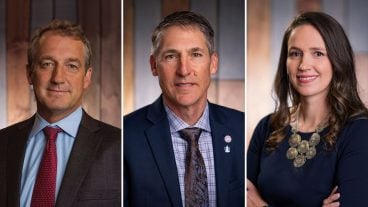
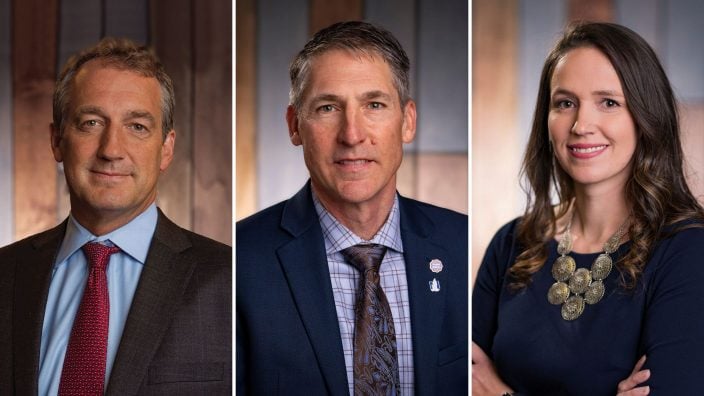
Bill Patterson, Cy Prettyman and Adele Flynn will continue to serve as officers for Ohio Farm Bureau Federation.
Read More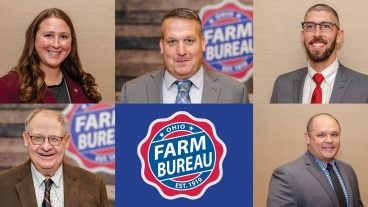
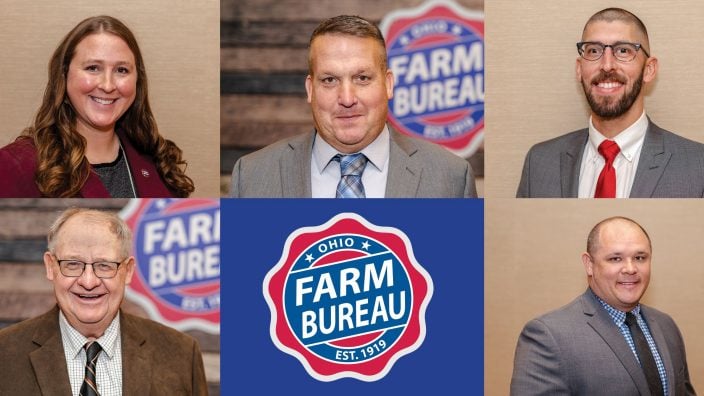
10 Ohio Farm Bureau members were elected to the federation’s state board during the 106th annual meeting.
Read More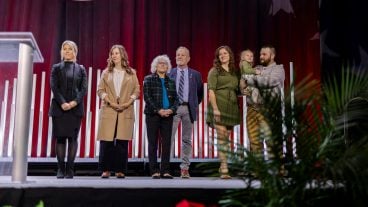
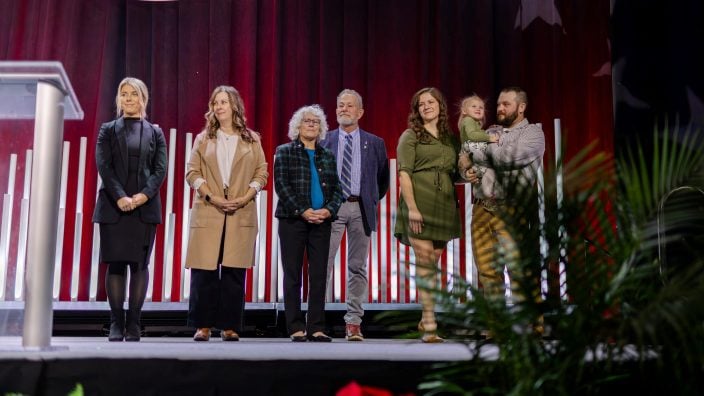
The grants help inspire, encourage and nurture young agricultural professionals and entrepreneurs to find creative and transformative ways to address challenges facing the agricultural sector today.
Read More

The 2024 Distinguished Service Award recipients are Dr. John Mossbarger of Fayette County, Sen. Rob Portman of Warren County and Jane Scott of Franklin County.
Read More